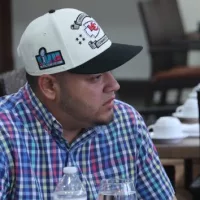
iStock/smolaw11BY: SOPHIE TATUM, ABC News
(CHICAGO) — From converting on-campus labs to designating quarantine dorms, many schools touted extensive safety strategies leading up to students’ return to college campuses.
Now that class is back in session, colleges and universities across the country have been forced to reckon with rising COVID-19 case numbers.
The University of Illinois Urbana-Champaign invested between $6-7 million for a comprehensive COVID-19 initiative that included testing students and faculty twice a week using a saliva test that university scientists developed, said Martin Burke, associate dean of research at the Carle Illinois College of Medicine.
But the multi-million-dollar investment was put to the test when the school recently experienced a rapid increase of cases.
“It literally was parties on a Thursday or Friday night — maybe Wednesday — or Wednesday, Thursday and Friday night, and then we started seeing the rising cases, you know, three or four days after,” Burke told ABC News.
Burke, who is also a chemistry professor at UIUC, said the “overwhelming majority” of students have done a great job, and although the school had modeled for students partying and not wearing masks, a “small minority” of students continued to attend and host parties despite knowing they had tested positive for COVID-19, resulting in a second wave of cases the school did not anticipate.
“It was very stressful, and it happened very fast,” Burke said.
Following the outbreak, students were asked to limit in-person activities and avoid socializing so the school could try and get the numbers under control, which Burke said made “a huge difference.”
“The very good news is, is that because we had this very robust fast frequent testing going on we literally saw it as it was happening,” Burke said. “And we saw those cases rising exactly where and we knew why, yeah so we were able to make immediate corrective actions on multiple fronts.”
This week, The University of Arizona announced it was urging students to partake in a 14-day “shelter-in-place” effort to mitigate the spread. As of Monday, there had been a total of 1,408 positive tests since July 31, according to the university’s COVID-19 website.
The school’s plan involves testing, tracing and treating, according to the website. Individuals can also download and participate in the campus’ “anonymous exposure” app.
“While the vast majority of students, faculty, and staff are following public health guidelines, some among us are choosing not to wear face coverings, congregating in large groups, and failing to isolate when ill,” university President Robert Robbins wrote to individuals on campus.
At the University of Arizona’s weekly virtual briefing, Robbins said the move was a “last ditch effort,” asking students to follow the rules “before we have to make some really drastic changes to how we’re dealing with this blatant disregard for public health measures.”
“I am telling you that I’m short of saying I’m mad as hell and I’m not going to take it anymore, because there’s only certain things that I can do,” Robbins said. “But this is part of being a good member of society, to take into account the health of others, not just your individual health and not just your individual desire to go out and have a good time and party.”
“So, this is a major problem, we anticipated it would be a problem, we had hoped that we wouldn’t have to begin to institute more draconian measures, but we’re to that point,” he said.
Meanwhile, at Indiana University in Bloomington, Indiana, Greek houses became a concern when mitigation testing positivity rates were showing above 50% in some houses, leading the administration to urge students to find new living quarters.
During the week of Aug. 31, “the positivity rate among communal living (Greek houses) was 24.56% of 1,421 test results,” while “the positivity rate among residence halls was 3.64% of 4,201 test results,” according to the school’s COVID-19 dashboard.
“The positivity rate among Greek-affiliated students who don’t live in their organizations’ houses was 13.7% of 540 test results.”
“Back in the spring, everybody from day one said, Greek houses are a concern, because, again, not because there’s anything pejorative or negative about them but that type of living — it’s hard to imagine how it’s going to work out safely,” said Aaron Carroll, the director of surveillance and mitigation for the COVID pandemic at Indiana University, noting the small spaces, limited number of bathrooms and the social aspects.
“They’re all friends, they’re all hanging out, they’re all eating together they’re all, you know, and it’s just, so, it is not totally unexpected, but you know … some Greek houses are doing better than others. So, it’s possible, it’s just very, very hard,” he said.
But the Greek houses are considered off-campus living, he said, and “we can’t tell people what to do off campus.” The university is continuing to monitor everybody to ensure it doesn’t spill over into the larger population.
Despite the spike of cases in the Greek houses, Carroll said he thinks the system is “holding the line” so far.
“I feel like a lot of the things we put in place are working. Of course, we’re still working to get the labs up, we have the flu coming, the winter, you know there’s a lot of variables still at play, but, but, yes, I would say that we planned reasonably well and we’re implementing the plan reasonably well,” Carroll said.
Copyright © 2020, ABC Audio. All rights reserved.















